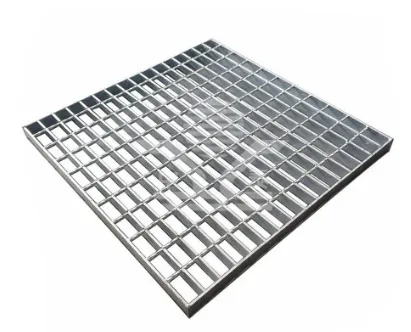Construction Site Security Fencing Ensuring Safety and Protection
In the bustling world of construction, securing the site is paramount. The presence of heavy machinery, valuable materials, and ongoing work can attract not only potential clients but also unwanted attention from thieves and vandals. To combat these risks, construction site security fencing has become an essential aspect of project management. This article explores the importance, types, and best practices for implementing effective security fencing at construction sites.
The Importance of Security Fencing
Construction sites are often vulnerable due to their open nature. Without proper security measures in place, they can become targets for theft and vandalism, leading to financial losses and project delays. The primary purpose of security fencing is to create a physical barrier that restricts unauthorized access. It serves as a deterrent to intruders while also protecting workers and the public from potential hazards associated with construction activities.
Additionally, security fencing plays a crucial role in ensuring compliance with local regulations. Many municipalities require construction sites to be adequately secured to minimize risks. A well-fenced site can also help in avoiding legal issues that arise from accidents or damages caused by unauthorized individuals.
Types of Construction Site Security Fencing
When selecting security fencing for a construction site, various options are available, each with its benefits and considerations
1. Chain Link Fencing One of the most common choices, chain link fencing is durable, cost-effective, and easy to install. It provides a clear view of the site while still acting as a barrier. However, its transparency might not deter all intruders.
2. Temporary Construction Fencing Often made from lightweight materials, temporary construction fencing is quick to set up and take down, making it an excellent option for short-term projects. It can be customized with signage and banners to advertise the construction company.
3. Plywood Fencing For sites requiring more privacy and enhanced security, plywood fencing is a suitable choice. It blocks the view of the site, reducing the temptation for theft. It also provides additional stability against harsh weather conditions.
construction site security fencing

4. Electronic Fencing Incorporating technology, electronic fencing systems can include features such as surveillance cameras, motion detectors, and alarms. While this option may involve a higher cost, it offers advanced security measures and real-time monitoring of the construction site.
5. Barbed Wire and Razor Wire For high-security areas, adding barbed wire or razor wire on top of fencing can significantly deter intruders. However, this option should be used judiciously, considering the potential risks it poses to workers and passersby.
Best Practices for Security Fencing
To maximize the effectiveness of security fencing, several best practices should be followed
- Regular Inspections Conduct routine checks to ensure that the fence remains intact and functional. Look for any signs of tampering or damage that could compromise security.
- Clear Signage Clearly posted signs indicating restricted access, surveillance, and potential hazards can serve as strong deterrents to trespassers. Make sure signage is visible and easy to understand.
- Integrate Security Technology Consider integrating security cameras and motion detection systems with fencing to enhance monitoring capabilities. This combination can provide real-time alerts and evidence in case of security breaches.
- Educate Workers Ensure that all site personnel understand the importance of security measures and are proactive in reporting any suspicious activities. A security-conscious workforce can greatly enhance overall safety.
In conclusion, construction site security fencing is an integral part of safeguarding valuable assets and ensuring the safety of workers and the public. By choosing the right type of fencing, implementing best practices, and embracing technological advancements, construction managers can protect their sites effectively against theft, vandalism, and unauthorized access. Ultimately, a secure construction site is a productive one, allowing projects to proceed smoothly and without costly interruptions.
-
Why Galvanized Trench Cover Steel Grating Resists Corrosion
NewsJul.10,2025
-
The Versatility and Strength of Stainless Expanded Metal Mesh
NewsJul.10,2025
-
Load Calculations in Steel Grating Platforms
NewsJul.10,2025
-
Keeping Pets and Kids Safe with Chicken Wire Deck Railing
NewsJul.10,2025
-
Hole Diameter and Pitch for Round Perforated Metal Sheets
NewsJul.10,2025
-
Aluminium Diamond Mesh in Modern Architecture
NewsJul.10,2025
Subscribe now!
Stay up to date with the latest on Fry Steeland industry news.

